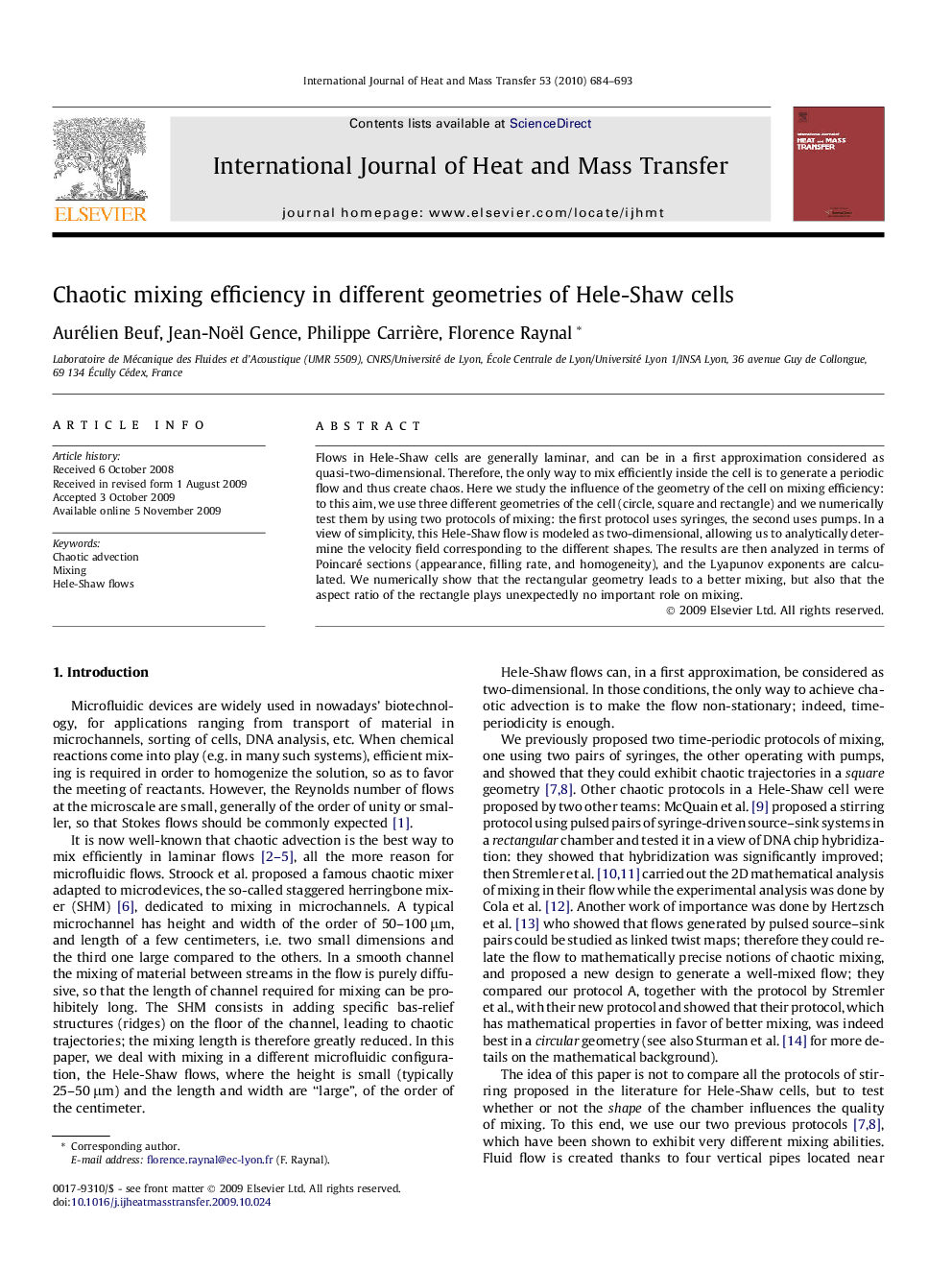| Article ID | Journal | Published Year | Pages | File Type |
|---|---|---|---|---|
| 661465 | International Journal of Heat and Mass Transfer | 2010 | 10 Pages |
Flows in Hele-Shaw cells are generally laminar, and can be in a first approximation considered as quasi-two-dimensional. Therefore, the only way to mix efficiently inside the cell is to generate a periodic flow and thus create chaos. Here we study the influence of the geometry of the cell on mixing efficiency: to this aim, we use three different geometries of the cell (circle, square and rectangle) and we numerically test them by using two protocols of mixing: the first protocol uses syringes, the second uses pumps. In a view of simplicity, this Hele-Shaw flow is modeled as two-dimensional, allowing us to analytically determine the velocity field corresponding to the different shapes. The results are then analyzed in terms of Poincaré sections (appearance, filling rate, and homogeneity), and the Lyapunov exponents are calculated. We numerically show that the rectangular geometry leads to a better mixing, but also that the aspect ratio of the rectangle plays unexpectedly no important role on mixing.
